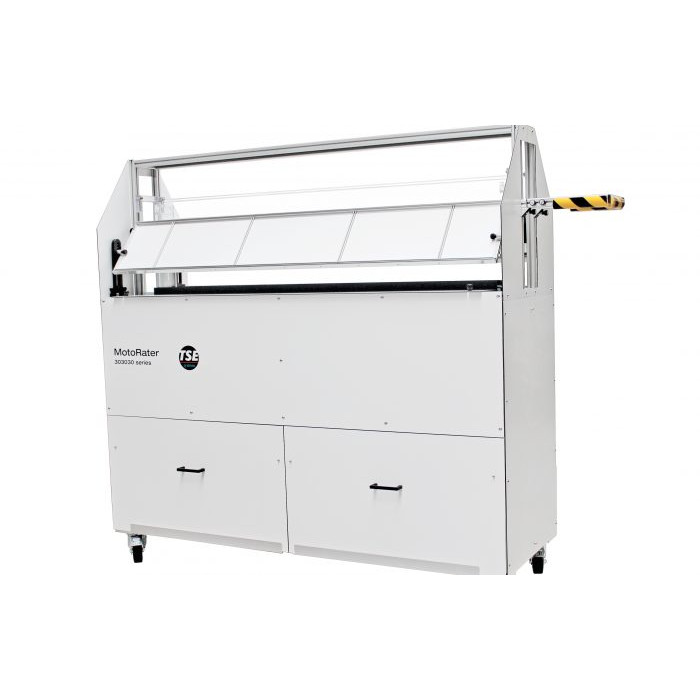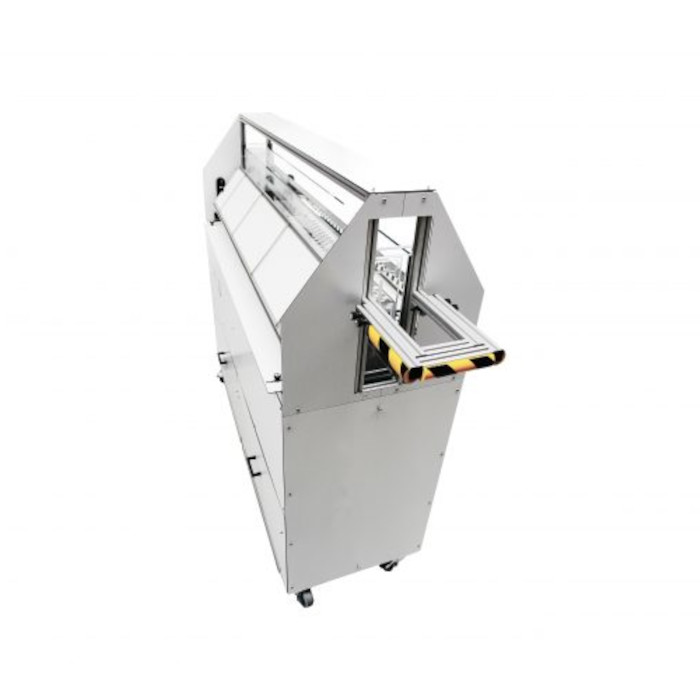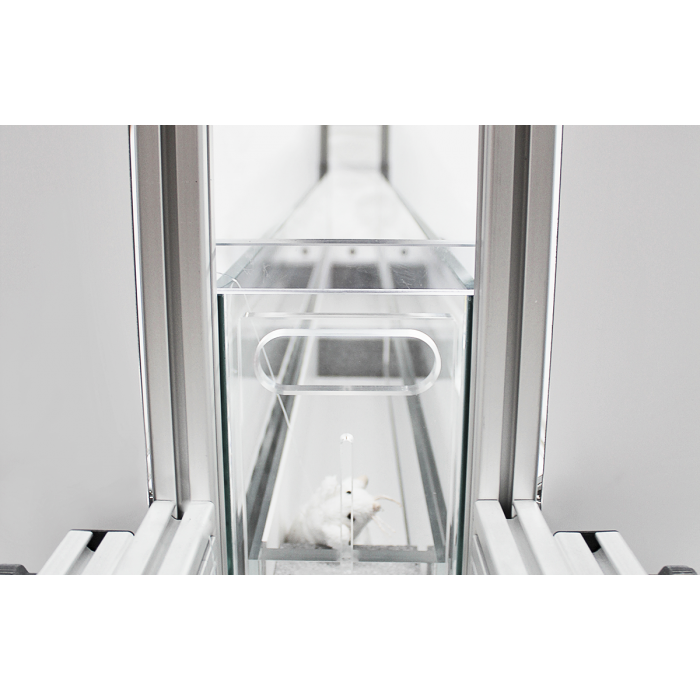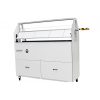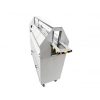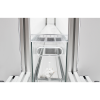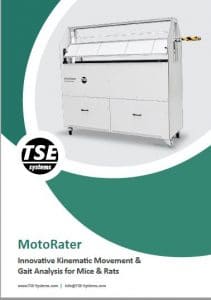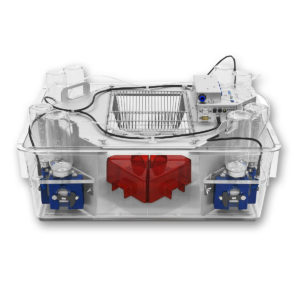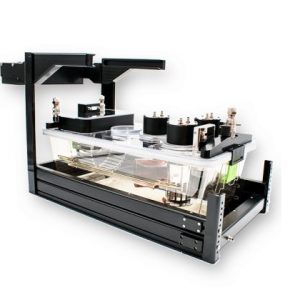Product Enquiry
If you would like to send us an enquiry about this product, please click the button below, fill in the form and submit.
Product EnquiryMotoRater
Kinematics & Gait Analysis
MotoRater is a semi-automated system for rodent kinematic gait analysis with high sensitivity to evaluate 4 different motion modalities – overground walking, skilled ladder walking, wading in water and swimming. In contrast to conventional methods, MotoRater allows testing animals in the water, which offers the exceptional opportunity to evaluate severely impaired rodent models, which would not be able to support their body weight on solid ground.
MotoRater observes the animal from 3 sides simultaneously (ventral, left, right) and provides detailed readouts of all body parts relevant to the motion, i.e. paws, ankles, joints, tail, head, hip, iliac crest, etc. – allowing reliable detection of subtle deviations, early symptom onset and treatment effects. MotoRater combines/synchronizes with external devices (EEG, EMG) and allows the implementation of other methods (e.g. Optogenetics Bouvier et al 2015, electro-myographic recordings Zörner et al 2010).
MotoRater, therefore, allows the objective phenotyping of various disease models with traits of impaired locomotor ability and detects subtle effects after genetic or pharmacological intervention. Fine motor kinematic gait analyses conducted with MotoRater (with more than 100 kinematic gait parameters) is a very sensitive way to measure motor skills with high translational value. Kinematic gait analysis in humans is done by a number of digital motion-capture cameras that record the position of light reflective markers attached to the patient’s joints. Hence, fine motor kinematic gait analyses conducted with MotoRater is the most accurate method to compare rodent gait with human conditions.
The following kinematic gait parameters can be analyzed through Motorater (over 100 parameters in total):
- General spatio-temporal patterns
- Stride distance, duration, speed, stance time, swing time#
- Inter-limb coordination
- Diagonal cadence, left/right alternation rhythm
- Swing phase and paw trajectory
- Swing speed, smoothness, trajectory shape, abnormality
- Body posture and joint angles
- Hip height, tail & nose height, limb function
- Gait variability, deviations
- Retraction, protraction
Features
- Fine kinematic gait analysis in 4 modalities: walking, ladder walking, wading, swimming
- Observation and analysis of 3 animal sides (ventral, lateral right/left)
- Data from all relevant body parts – not just paws
- Movement analysis based on trajectories of joint positions and angles with respective properties (i.e. velocity and acceleration)
- More than 100 parameters
- High sensitivity: MotoRater allows to detect subtle to severe gait changes in various animal models
- Combines with several other methods (e.g. Electrophysiology, Optogenetics and Telemetry)
Application
- Fine Motor Kinematic Analysis
Disease models
- Stroke
- Huntington’s
- Multiple sclerosis
- Amyotrophic lateral sclerosis
- Duchenne muscular dystrophy
- Parkinson’s
- Batten disease
- Other neurological and rare diseases
Brochure
Selected Publicatons:
Yoshizaki S, Kijima K, Hara M, Saito T, Tamaru T, Tanaka M, Konno D-J, Nakashima, Okada S. Tranexam* acid* reduces heme cytotoxicity via the TLR4/TNF axis and ameliorates functional recovery after spinal cord injury. J Neuroinflammation. 2019; 16: 1–15.
Krupa P, Svobodova B, Dubisova J, Kubinova S, Jendelova P, Machova Urdzikova L. Nano-formulated curcumin (LipodisqTM) modulates the local inflammatory response, reduces glial scar and preserves the white matter after spinal cord injury in rats. Neuropharmacology. 2019; 155: 54–64.
Chen B, Li Y, Yu B, Zhang Z, Brommer B, Williams PR, Liu Y, Hegarty SV, Zhou S, Zhu J, Guo H, Lu Y, Zhang Y, Gu X, He Z. Reactivation of Dormant Relay Pathways in Injured Spinal Cord by KCC2 Manipulations. Cell. 2018; 174: 521-535.
Preisig DF, Kulic L, Krüger M, Wirth F, McAfoose J, Späni C, Gantenbein P, Derungs R, Nitsch RM, Welt T. High-speed video gait analysis reveals early and characteristic locomotor phenotypes in mouse models of neurodegenerative movement disorders. Behav Brain Res. 2016; 311: 340–353.
Zörner B, Filli L, Starkey ML, Gonzenbach R, Kasper H, Röthlisberger M, Bolliger M, Schwab ME. Profiling locomotor recovery: Comprehensive quantification of impairments after CNS damage in rodents. Nat Methods. 2010; 7 (9): 701-708.
Selected Product Citations
A cross-sectional study of functional and metabolic changes during aging through the lifespan in male mice |
|
| Michael AMichael A Petr Petr, IreneIrene Alfaras Alfaras, Woei-NanWoei-Nan Bair Bair | Elife | Published 20 Apr 2021 |
| Article Snippet This low-field nuclear magnetic resonance device acquires and analyzes Time Domain-NMR signals from all protons in the entire sample volume and measures body fat, free body fluid, and lean tissue content.. Mouse gait speed and tail height analysisMice were acclimated to the TSE MotoRater system (TSE Systems, Inc Chesterfield, MO) for a week before gait and tail height recording as described ( ).. In brief, during gait assessment, the home cage was placed at the opposite end of the corridor to motivate the mouse to walk. |
|
Gait parameters as tools for analyzing phenotypic alterations of a mouse model of Charcot-Marie-Tooth disease |
|
| Sun Hee Hwang, Eun Hyuk Chang, Byung-Ok Choi | Anim Cells Syst Seoul | Published 11 Feb 2021 |
| Article Snippet Tr-J mouse develops CMT1 phenotype afterbirth and definite phenotypic abnormality appeared within 3 weeks of age.. For determination of gait pattern of mouse model, we applied a MotoRater system which allows the record of the mouse motion from 3 sides simultaneously ( (A)).. To acquire several gait parameters including the angles of hip, knee and ankle (sagittal plane) as well as step width and stride length (transverse plane) ( (B,C)), we recorded the mouse gait and calculated for each parameter by measuring the movements of each marked position. |
|
New Model of Ventral Spinal Cord Lesion Induced by Balloon Compression in Rats |
|
| Petr Krupa, Katerina Stepankova, Veronika Cimermanova | Biomedicines | Published 5 Nov 2020 |
| Article Snippet A horizontally placed ladder rung was placed between the start and exit cage.. The run was recorded by a high-speed color camera (CamRecord CL600×2, 1280 × 1024 pixel, Stemmer Imaging, Puchheim, Germany) and evaluated using MotoRater 303030 and TSE Motion 8.5.11 software (TSE-systems, Germany).. The run was recorded by a high-speed color camera (CamRecord CL600×2, 1280 × 1024 pixel, Stemmer Imaging, Puchheim, Germany) and evaluated using MotoRater 303030 and TSE Motion 8.5.11 software (TSE-systems, Germany). |
|

